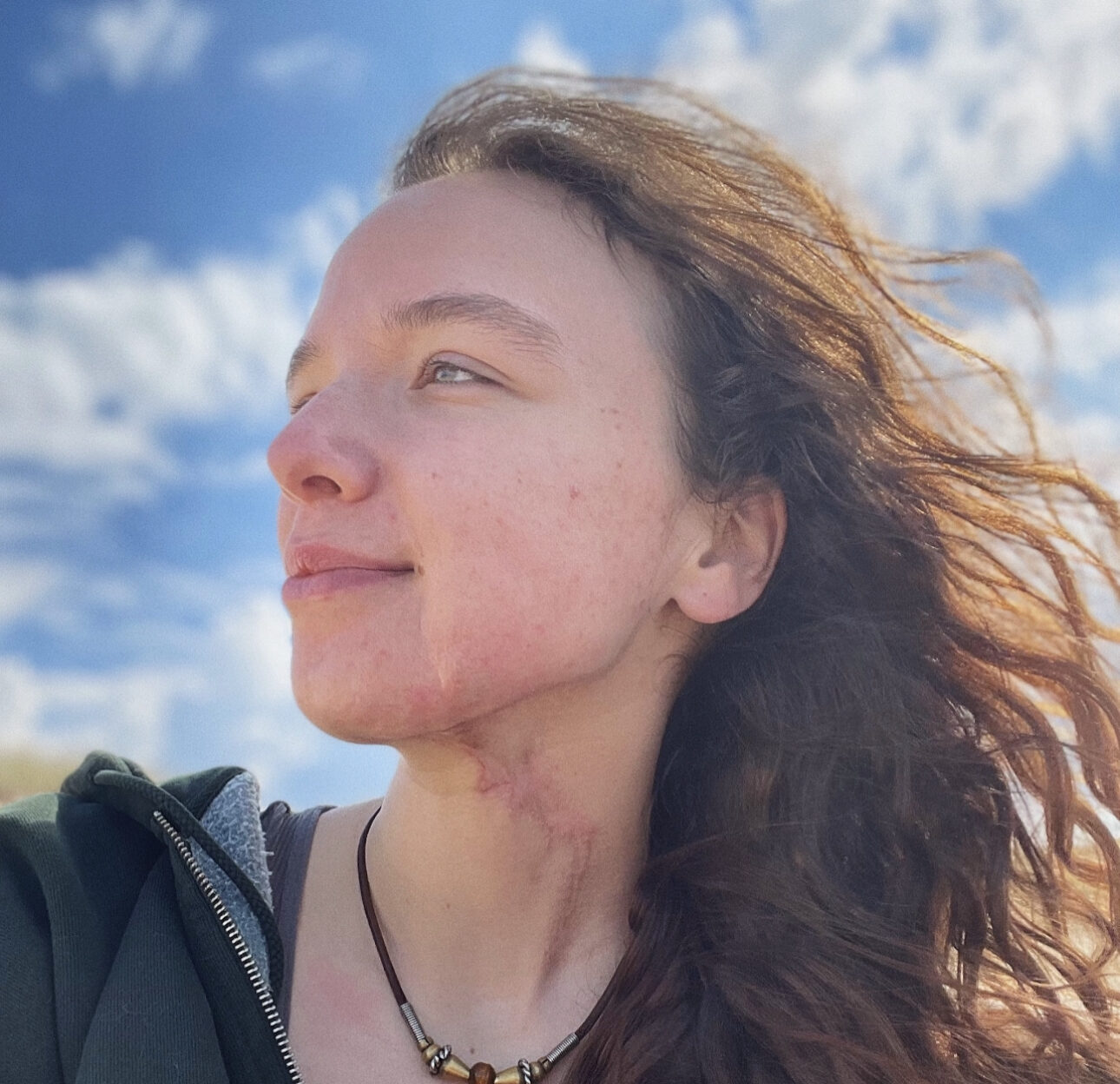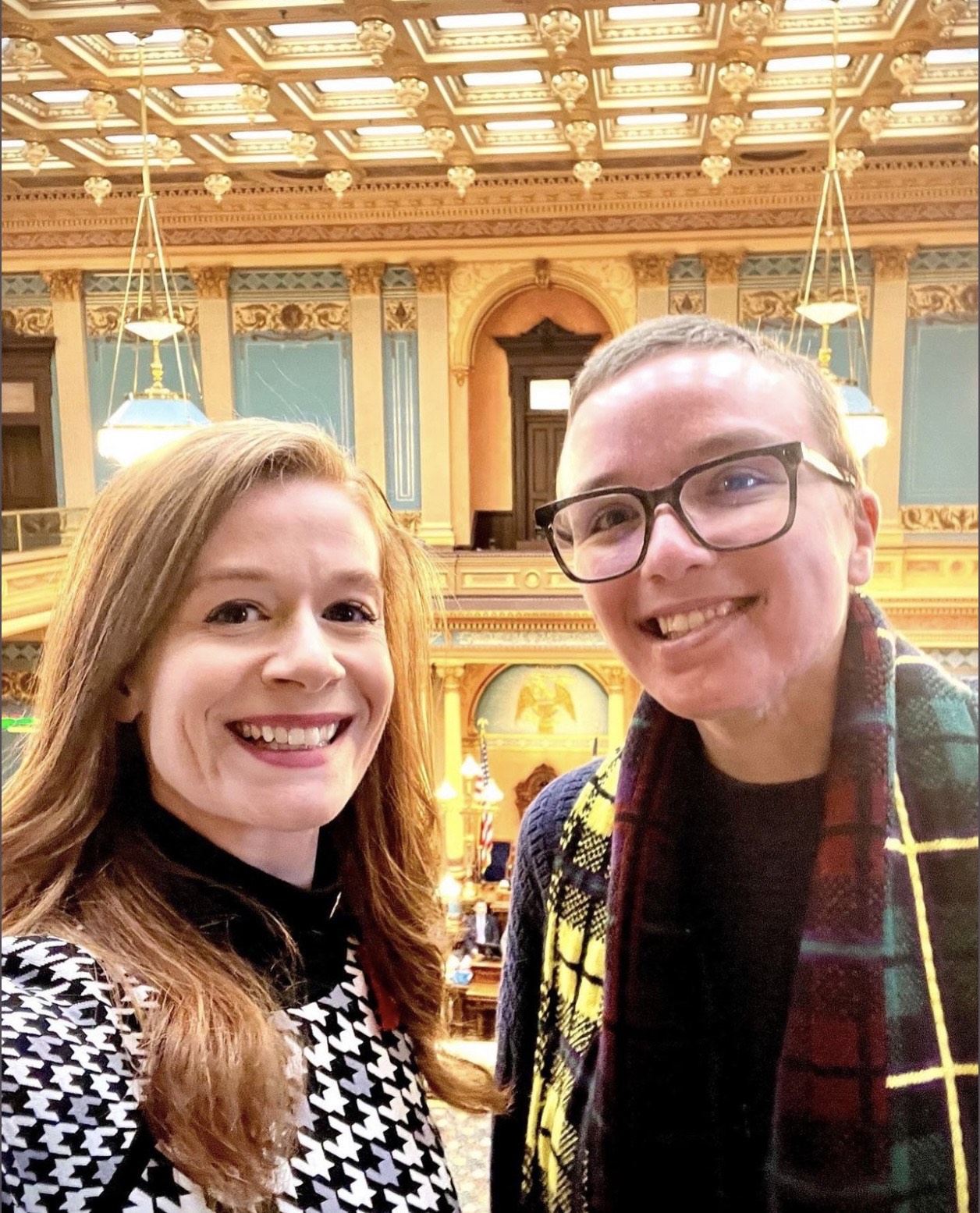Clara Leon-Brown
Disability History in the US
By the time I was born in the San Francisco Bay Area, the area was a centre for the disability rights movement. A far cry from the days in the late 19th century when San Francisco passed the first of the Ugly Laws (which banned people who looked unusual from being seen, particularly begging, in public) (1), by 1985, Berkeley – just across the San Francisco Bay, where I was born – already hosted the Center for Independent Living. When I was small, my mother volunteered as a board member for Through the Looking Glass, also in Berkeley, a charity which seeks to empower disabled people, particularly – as she remembers it – parents. I was a disabled child born in a world that, though it didn’t know what to make of my facial differences, already could imagine and support the idea that disabled people could find love and have their own families.
Growing up in the US
Growing up in the US, however, I nonetheless got the impression that my disabilities – the things that made me different – were a highly personal concern. I had 12 surgeries before I turned 18, and while they all had a functional component, they were also meant to make me look more normal. Normal was a gold standard and one I could never achieve. I learned to compensate for my appearance, and to conceal my physical limits. People – children, frequently adults too, stared at me on the street. I didn’t have Ariel Henley’s book A Face for Picasso (2) back then, but I relate to the experiences she described in it very much. I learned about my disabilities – my facial differences included – as obstacles to overcome.
In high school, I had a “504 plan” – a document that every student identified as having a disability had drawn up for them, which outlined which accommodations they needed to be successful in school – but I didn’t know where the term which gave it its name came from. It wasn’t until I was living in England and watched the 2020 documentary Crip Camp that I learned about the hard work and the struggles our disability rights forebears went through to achieve, including their 1977 25-day sit-in right in my almost-hometown of San Francisco to push for the passage of Section 504, a precursor to the Americans with Disabilities Act which required “that all federally funded programs be accessible to the disabled.” (3).
On both sides of the pond, we seek connection – both personal and intellectual.
An International Move – Disability History in the UK
I moved to Brighton, East Sussex, in 2019, after marrying my British wife. I soon realised that Brighton bore a lot of similarities to Berkeley and San Francisco. Not only are they all seaside cities, tourist hotspots, known for their sense of fun and as centres of queer history, community, and the struggle for LGBT+ rights, Sussex also has its important disability rights history, and Brighton is home to disability rights organisations working to dispel stigma and make life easier for disabled people. Fascinatingly, Sussex’s history relates more directly to facial difference than anything I’ve encountered in the Bay Area. The town of East Grinstead, just north of Brighton, had long ago become known as the “town that didn’t stare” after a pioneering programme for rehabilitating burned and disfigured airmen was founded there during WWII. (4)
And for what it’s worth, the effect seems to have remained – and shifted beyond the borders of that town. Here in Brighton, nobody stares at me at all, not even children! They’ll engage, play peek-a-boo, chatter. They don’t ignore me. But they don’t stare. It’s incredibly refreshing.
Common Perceptions
Whereas the common perceptions around disability in the US seem to focus on individual stories and on overcoming adversity, disability in the U.K. is seen much more through a rights and entitlements lens. My first role volunteering for a disability rights organisation here was helping people apply for PIP – personal independence payments. Paradoxically, while British disability activists are focused on the Social Model, an understanding of disability that focuses on the way society limits us, obstructing our access and participation, the governmental funding model in the U.K. pushes people to focus on what they can’t do, not on what they can.
The U.K. is less conformist, less image-conscious than the US, and in a way, it has led me to be able to understand my disability and my facial differences along different axes. I’m also struck that there are two major facial difference campaigning charities here: Changing Faces and Face Equality International, whereas – in my experience at least – the US landscape has always been populated mostly by condition-specific, medically-focused groups.
Comparisons of the Parallel Movements
In the last few years, living in the U.K. and coming into my own as a kind of disability activist, I’ve seen a lot more open engagement and willingness to dispel stigma. But it’s hard to know whether it’s a cultural difference or simply a sign of the times. Nearly all the disability initiatives I’m involved in now are transnational, and we all seem to speak the same language. On both sides of the pond, we seek connection – both personal and intellectual. We share similar ideas about the social model, about identity-first language, and about reclaiming slurs.
There’s a story here – a story about contrasts, a story about home, but fundamentally, a story about connection, about different histories but a shared future.
1 Susan M. Schweik, The Ugly Laws: Disability in Public. New York and London: New York University Press, 2009.
2 Ariel Henley, A Face for Picasso: Coming of Age with Crouzon Syndrome. New York: Farrar, Straus and Giroux, 2021.
4 https://www.eastgrinsteadmuseum.org.uk/guinea-pig-club/town-didnt-stare/
Tags: Blog, disability, Face Equality, facial difference, Story, storytelling, visible difference Posted by



